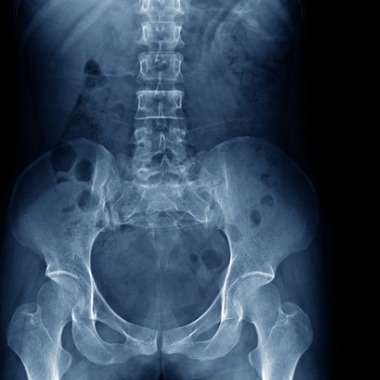How Should a Healthy Sacroiliac Joint Function?
The sacroiliac (SI) joint is the place where the sacrum and the ilium meet. There are two SI joints, one on each side of your lower back, where the hip bone meets the tailbone. These joints act as the transition between your spine and pelvis and work to support the weight of your upper body. Moreover, the SI joint also serves as a shock absorber for the spine and pelvis, helping to maintain stability and balance when standing, lifting, or walking.

SI joint dysfunction may cause pain and instability in the lower back, hips, legs, groin, and buttocks. Therefore, it is crucial to understand how a healthy SI joint should function so that any dysfunction can be identified and treated. Fortunately, if you do suffer from SI joint dysfunction, there are treatment options available. To help you grasp SI joint health and dysfunction, here’s a breakdown of how the sacroiliac joint works when it is healthy.
The Components of a Healthy Sacroiliac Joint
There are three main components of a healthy sacroiliac joint. If you experience any dysfunction in these components, it may indicate that your SI joint is not functioning normally and should be assessed by a professional.
Form Closure
This component refers to the stability of the SI joint. The bones that make up the joint and the capsule and ligaments that support the joint are responsible for maintaining its form. This allows the SI joint to hold the sacrum in place and keep it from moving too much when walking, running, or lifting. This passive stability is known as form closure.
Force Closure
Force closure is the active stability of the joint, meaning it is what happens when you contract your muscles and ligaments to provide additional stability. There are four core muscles that provide force closure to the SI joint, three of which are directly attached to the sacrum and ilium. These muscles include:
- The transversus abdominus
- The multifidus
- The pelvic floor muscles
- The diaphragm
Your diaphragm is not directly attached to the SI joints but functions as an essential stabilizer of the pelvis and sacroiliac joints. In addition, a secondary group of muscles called slings are also necessary to provide force closure. Slings cross the midline of the body and SI joints from above to below and contract during movement of the spine and lower extremities. The left latissimus and right gluteus maximus are examples of slings that provide force closure to the SI joints.
Motor Control
The third component of a healthy SI joint is motor control. Motor control requires the brain to send signals to the muscles and ligaments that provide form and force closure so that they can appropriately respond when needed. Without proper motor control, your sacroiliac joints may lack stability as well as mobility, resulting in dysfunction. Therefore, good motor control is essential to sacroiliac joint health as it helps the core muscles contract during movement to give your SI joint additional stability.
Signs and Symptoms of Sacroiliac Joint Dysfunction
If one or more of the components of a healthy SI joint are not functioning correctly, it may lead to sacroiliac joint dysfunction. Diagnosing SI joint dysfunction may be difficult since many symptoms of SI joint dysfunction can also be symptoms of other conditions or injuries, such as sciatica. However, there are certain signs and symptoms that may indicate SI joint dysfunction. These include:
- Low back pain
- Hip pain or stiffness
- Pain in the groin or buttocks
- Achy or sharp pain with movement of the hips or lower extremities
- Difficulty standing and sitting for long periods of time
- Leg instability
- Numbness or tingling in the lower extremities
Treatment Options for Sacroiliac Joint Dysfunction
While SI joint dysfunction may make even the simplest of tasks painful and challenging, the good news is there are treatments available to help relieve pain. If you are experiencing any of the above signs and symptoms of SI joint dysfunction, it is best to speak with a healthcare professional. The following treatments may be recommended:
Chiropractic Care
A chiropractor can use spinal manipulation techniques and mobilization to adjust the joint and reduce pain. They may also help identify any underlying causes of SI joint dysfunction, such as uneven leg lengths or muscular imbalances. If your SI joint is fixated or stuck, a chiropractor may be able to help restore motion. However, if your SI joint is hypermobile, manual manipulation of the joint may not be recommended.
Supports and Braces
Using supports and braces may provide additional stability to the SI joint and help reduce pain. This may be useful if you have a hypermobile SI joint. There are several types of supports and braces available, including lumbar belts, sacroiliac belts, and pelvic support devices. Your healthcare provider can help you find the best option for your needs.
Sacroiliac Joint Injections
SI joint injections may be used to diagnose and treat SI joint dysfunction. During the procedure, a local anesthetic and steroid are injected into the SI joints to reduce pain and inflammation. Fluoroscopic guidance or a CT scan may be used to locate the SI joint and ensure the injection is placed in the correct area.
The LinQ SI Joint Stabilization System
Although the above treatment options may provide relief from SI joint pain, in some cases, a more comprehensive option may be needed. The LinQ SI Joint Stabilization System by PainTEQ is a minimally invasive procedure designed to provide long-term relief from SI joint dysfunction.
The LinQ procedure uses a small bone allograft to stabilize and fuse the SI joint. The allograft is placed in the SI joint using a single incision. By taking a posterior approach away from nerves and large blood vessels, the LinQ SI Joint Stabilization System has a faster recovery than traditional fusion surgeries. The procedure typically takes less than an hour to complete, and most patients are able to go home the same day.
Learn More About LinQ
SI joint dysfunction can be debilitating and limit your ability to do the activities you enjoy. With the LinQ SI Joint Stabilization System by PainTEQ, you may achieve long-term relief from SI joint dysfunction. To find a LinQ provider near you, contact PainTEQ today. If you are a healthcare provider and want to learn more about how PainTEQ can help enhance your practice, click here.



